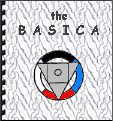Exploration and Development

To explore spirit and reality thoroughly, with an eye towards the complete development of the human being, one must operate fully on three levels: the subterranean, cavernous, or deep consciousness of the individual; the surface, topside, or everyday practical consciousness; and the peak, upper reaches, or higher consciousness. Not everyone who steps beyond the topside chooses to go into both of the other levels, and not every person will turn out to go equally far, either in any one of the three realms or in total, over the course of a lifetime. Not every person will even care to, and so some may explore the spirit not at all. However, to function only topside is to remain asleep in waking life. To extend from there only into the caverns is to eventually become preoccupied with one's own personal self and to wander in private mythology, however common to other explorers its elements may be and however thrilling its increasingly irrelevant adventures may seem. And to stretch only into the upper reaches is to be ungrounded and lost in chasing experience for the sake of its own high, losing not only the ill of judgmentalism but also the necessary art of discernment.
The topside realm is developed through moral effort and by way of attendance to the demands of daily life, such as care of interpersonal relationships, health maintenance and improvement, identification of talents and increasing of skills, and improvement of such self-discipline as is called for in both difficult and dull tasks (ranging from persevering in an exciting challenge to completing ordinary household and financial management chores). If the surface level self and everyday life do not together become infused with the lessons and benefits of spiritual experience, nothing that has been discovered or accomplished in the realm of the spirit matters. The infusion is breath, and breath is life. One who explores and does not breathe does not live.
The depths of the caverns are explored by means of arduous labor and tests, as well as through various kinds of stimulation, whether in the mind or in the body. Many worlds may be revealed while exploring here, both while in the state of consciousness familiar to the topside and during what is known as altered states. Physical challenge and its metaphorical equivalents rule alongside emotional tilling and harrowing in this domain. Heavy use of symbolism is brought to bear, in various forms, such as names, sounds, shapes, colors, scents, whole objects, physical movement, and more. These inducements, together with rituals of confinement, deprivation, endurance, suffering of pain or loss, resistance to temptation, wandering or questing, battle, provoking or imposing of humility, riddle solving, sexual triggering or other uses of bodily pleasures and vulnerabilities, alterations to the body such as piercings or tattoos, and many other techniques that lead one through the rich and rocky passages of the earth, are all methods that have been employed throughout the ages for calling to the deepest aspects of one's individual self. Each serves to show to the initiate deep secrets known by others who have explored similarly. Personal flaws and weaknesses, both inborn and collected, are boldly revealed, confronted, and challenged. Certain kinds of inner healing can be affected in this way, and many roadblocks to the ability to live out one's values and to define and strive for one's goals can be struck down as courage and self-knowledge are developed. The consequently emerging visions and understandings can be strikingly similar in different people because of our common human core, and so a sense of connectedness to all of humanity can be cultivated. Awareness of being an integral part of nature is also brought about and enhanced. Some of these tactics can be quite dangerous, however. While it may not be necessary for every individual to engage in those that carry such high risk, any who do will require a knowledgeable, well trained guide who is willing to share the risk and responsibility of the exposure and its results, both physical and otherwise. No one should step onto this path without being aware that there are risks involved. While guides must be able to properly rise to their task, aspirants must also give their willing consent and take responsibility for having done so.
The upper reaches are attained in a state of deliberate calm. While there may still be humility, discipline, and some kinds of abstention required, the exercise itself is one of stillness of mind. One's body may be moving in some pattern, or it may be motionless, but the consciousness is allowed to lift free. In this condition, one may consider oneself objectively, observing one's own body, emotions, and thoughts in a detached manner. This observation can, interestingly enough, spring up unexpectedly while one is decidedly not calm in body, emotion, or thought, bringing on a separate calm beyond the fray to watch as it happens. When this occurs, the ability to choose and direct the path of those elements of self during turbulence is eventually discovered and may be developed. There is also great merit to simply sitting quietly and not altering them, so as to learn what can be known by deliberately passive observation only.
Another step is to taste of the harmonious beauty of Oneness, in which there is completeness, wholeness, and matter-of-factness. The larger picture is displayed; the illusion of apartness and disconnectedness is removed. This can be experienced as though it were from a perspective internal or external to the self. One may or may not even be aware of there being a personal self at all. At this point, the smaller self becomes directly acquainted with the sense of there being a higher Source Consciousness. If this awareness does not hold from the first time onward, this sense of reality is touched more and more, until it ceases to be only an experience and comes to be established as a permanent state, even during ordinary, nonmeditative activity and consciousness.
Further on in this range, Nothingness is unmasked. It is nowhere, and there is nowhere that it is not, there being no place. There is no experience because there is nothing to experience and no one to experience it. When the curtain is drawn back, there is nothing to find, no one to find it, no drawing of any curtain, no curtain to be drawn. There is no sensation of it being like or different from anything, because there is nothing to be like or different from anything else, nothing else for it to be like or different from, and no one to sense or compare it. There is no separation, no togetherness, nor any singularity. There is no feeling and no one to feel it. There is no time when it is not; there is no time, it never is, there is no it, there is no is. Nothing is happening. In our poor language, we might say this nothingness is within all and all is within this nothingness, matter being made mostly of nothing and also being an illusion that there is actually something when there is not. At the same time, it has been said that nature abhors a vacuum, and so there is also no nothing. How all this can be, as well as what arises from what and how, are part of the great mystery of the Ultimate Nature of Reality. Again, in our poor language, we might say one can brush up against differing amounts or kinds of indirect knowledge of Nothingness, touch and know it directly with varying levels of intensity and for varying periods, and eventually come to inhabit it on an ongoing basis, to varying degrees. These contacts can occur spontaneously or be attained through extensive study and deeply focused practice.
When one arrives even part way, as it were, into Nothing, and then has a chance to reflect upon the connection between it and everything else, the ultimate truth of the value of one's morals and life in reference to the grand scale may be directly and personally ascertained. At this point, a choice must be made. In one direction, there lies imprisonment: All the journey improves the individual not one iota in the end, as one collapses into the ignorance inherent in the belief that morality is ultimately completely relative and irrelevant. In the eyes of such a person, the whole process of spiritual development is rendered an utterly useless waste, and life itself may come to be considered likewise. Gutted of meaning, spiritual excursions create no more than a muffling stupor or pleasant distraction, at best. The other way points to freedom: One uncovers the real foundation and rationale for genuinely moral living. The distinction between judgmentalism and discernment is understood, so that the parade of false moralities may be cast aside. The worth of life is affirmed, with fulfillment, in its truest and most noble sense, honored as its point. In all this, joy is found and celebration warranted.
The arrival of understanding and choice of freedom also offer another insight. At this point, the way is open to see how Ultimate Divine Spirit can, all at once, be such an awesome power, such an intimate and gentle companion, an eternally constant happening, nonexistent, and many other things - some of which we may have no language to even begin to attempt to express.
While the information given here may make an ordered presentation of useful distinctions between different types of unfoldment and the techniques for achieving them, one should not become overly caught up in the terminology used to do so. Also, these explanations are not meant to describe an exact, uniform, linear progression, required to be done in the same order and with the same methods by all people. One's practice may, at any given moment, simultaneously or successively include elements of each form. And, over the long arc of development, one may move back and forth between forms generally. Both kinds of variations in travel will allow one to pick up missing elements and do ongoing maintenance as needed. There may also be occasion for pauses and breaks.
It should be remembered that the nature of the overall change discussed here can be one of long evolution, as instantaneous perfection is not reasonable to expect. Patience and honesty with oneself are necessary, not just virtuous. Self-indulgent, brutal, public confessionalism, however, should not be considered appropriate as an automatic response whenever persisting imperfections are noticed. While hiding from the truth would be damaging, a balanced discretion is always vital to good decisions about how to face such matters.
Regardless of tradition, those who are steeped in exploration and advanced in development are involved full length, from depth to height. This is so, no matter what they appear to be doing when considered by the outside observer. Some traditions may, on the outside, appear to move in only one direction or the other. But the truly fulfilled being comes full circle and eventually operates on all levels until complete integration of the three is achieved. In abandoning the journey after it is begun and settling for less lurks mediocrity and disappointment, carrying forever, however quietly, the nagging and sleepy burden of what one is missing. To roam the territories of fulfillment is to truly awaken to life.
And what does one do when such great wealth is attained? One does as is done along the way to attaining it. The infusion is breath. Breath is life. One breathes. One lives. And the wave crashes over itself.
Articles Set 2
Alphabetical List of All Articles

All contents ©


unless otherwise noted.
Back to the Introductory Page
or
Click to return to the main page of
